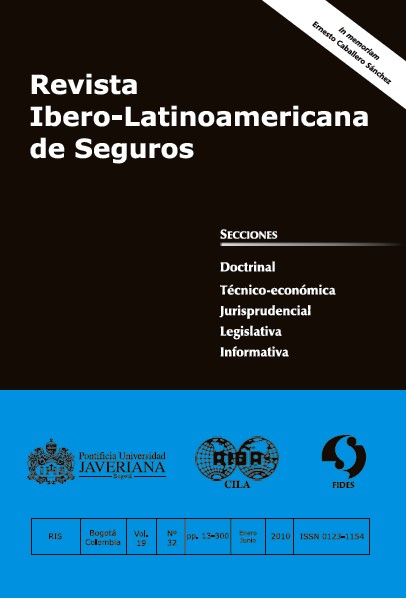Abstract
In recent years, a new generation of capital market-based alternative risk transfer and hedged risk financing derivatives has been developed and refined in the branch of nonlife insurance. Known as securitization, the ultimate goal of these products has been to increase the insurance market underwriting capacity, by offering a better coverage through the development and issuance of insurance-based financial derivatives (Insurance-Linked Securities, ILS), such as bonds.
The most widespread and refined form of securitization to date is the issuance of catastrophe bonds (or Cat bonds), whose cashflows, coupons and principal are dependent upon the occurrence of a catastrophic event of those specified by the issuance. In 2005, AXA made a significant breakthrough by using these transactions to cover high frequency, low intensity events typically hedged with insurance and reinsurance tradicional mechanisms, such as the automobile portfolio underwriting risk.
This article first examines the evolution and development of the cat bond market from its origins until as late as 2007, the last year with available data. Then, the main features of two securitization transactions carried out by AXA to hedge against the highest layers of its automobile portfolio underwriting risk are described. Finally, the paper points out the advantages in using this kind of instruments to the securitization of mass risk.
This journal is registered under a Creative Commons Attribution 4.0 International Public License. Thus, this work may be reproduced, distributed, and publicly shared in digital format, as long as the names of the authors and Pontificia Universidad Javeriana are acknowledged. Others are allowed to quote, adapt, transform, auto-archive, republish, and create based on this material, for any purpose (even commercial ones), provided the authorship is duly acknowledged, a link to the original work is provided, and it is specified if changes have been made. Pontificia Universidad Javeriana does not hold the rights of published works and the authors are solely responsible for the contents of their works; they keep the moral, intellectual, privacy, and publicity rights.
Approving the intervention of the work (review, copy-editing, translation, layout) and the following outreach, are granted through an use license and not through an assignment of rights. This means the journal and Pontificia Universidad Javeriana cannot be held responsible for any ethical malpractice by the authors. As a consequence of the protection granted by the use license, the journal is not required to publish recantations or modify information already published, unless the errata stems from the editorial management process. Publishing contents in this journal does not generate royalties for contributors.


